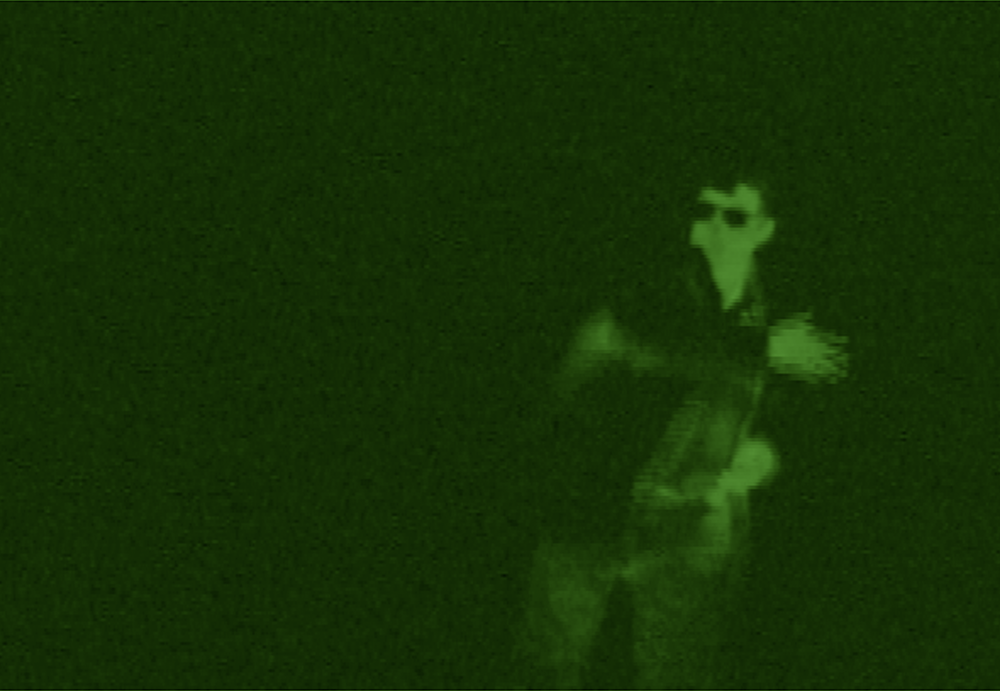Miami Islet
CR 130. Year 1998


- EN
- DE
What is I today? You bring an empty bottle into the art museum. In there you find an empty wall. Walls are vertical islands. Bring the empty bottle into the museum like an unpainted picture. What ...
Depuis Leben en 1974 jusqu’au Monument contre le fascisme (1986-93) et Monument contre le racisme (1993), et même Miami Islet (1998-1999), beaucoup de vos œuvres s’inscrivent dans un processus où la trace, le signe disparaît, voir est impossible. Il me semble qu’il ne s’agit pas tant d’un effacement de la trace que du fait que cette trace « s’abîme » (y compris au sens propre) dans le réel. Les pas des visiteurs réduisent en poussière les mots écrits à la craie sur le plancher ; la stèle de Hambourg s’est enfoncée dans le sol au fur et à mesure qu’elle se couvrait d’inscriptions ; la face gravée des pavés de Saarbrück est tournée dans le sol ; entièrement plongée dans le noir, la salle pour Miami Islet n’a permis que des images photographiques fantomatiques. Cela signifie-t-il que nous sommes complètement pris au piège du réel, que l’art ne peut pas, ne peut plus être une échappatoire, ni une forme de transcendance profane ? En même temps, et contradictoirement, ce qui est caché ne peut-il pas, par définition, devenir sacré ?
Catherine Millet 2004
Located between artistic performance and aggressive act, both works consciously reject the question of meaning. Smithson explicitly argued against the notion that an artwork had to serve an idea or make “sense”: “The island is not meant to save anything or anybody but to reveal things as they are.” Artworks are not meant to be somehow filled with meaning. Rather, they show things as they are. Artworks are not ideological bearers of meaning but rather serve to render states of being visible... Such authorship leads to a situation in which the effect of thought processes on the actors is usually more important than the materialization of the artwork and its sculptural presence. Paradoxically, the hard bottle resembles a fragile butterfly whose gentle fluttering grazes our sense of “I.” Because the representation of reality cannot be registered visually, the gaze turns inwards. Everything can pursue its right to contemporaneity: the lived, the loved, the imagined, the sensed, the remembered. The splintered glass scratches a new track in the expanses of memory.
Paolo Bianchi 2016
Categories
Keywords
Performance / Installation
Darkened, empty space, wall text, broken glass, posters, newspaper ads (Thurgauer Zeitung, Cashual, Zurich, Tagblatt, Zürich)
Jochen Gerz realizes an interactive work of art at the Kunstmuseum Thurgau/Kartause Ittingen as an homage to Robert Smithson's plans to cover the Miami Islet rock with broken glass, a project blocked by the environmental organization Greenpeace. Posters and newspaper ads invite visitors to bring an empty glass bottle to the museum. At the museum they find a wall text at the entrance to a darkened space inviting them to walk to the end of the space and throw a bottle against the wall.
Realisation
Ittingen, 19. October 1998 - 20. April 1999
Bibliography
I: Zürich 1999. Bolzano 1999, p. 135. Zürich 2000, pp. 8-9, 14-17, 24, 26, 36-39, 60-63,120-123, 150-153
II: Arlitt 1998. Beil 1998. Hochuli 1998. Red. 1 - 11, 1998. Schwerzmann 1998. Schwitzler 1+2, 1998. Vachtova 1998. Zwez 1998. Red. 1, 1999. Bianchi 1999. Hübl 1999. Pühringer 1999.
III: Dworschak 1998, Millet 2004 p. 150
V: Drathen 2004, pp. 104-107. Hoeven 2015, pp. 210-250.